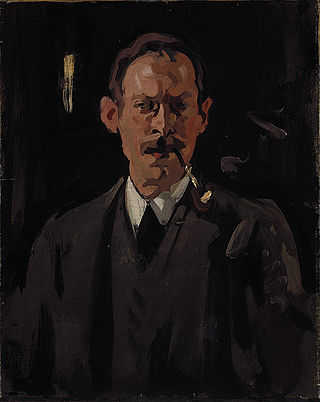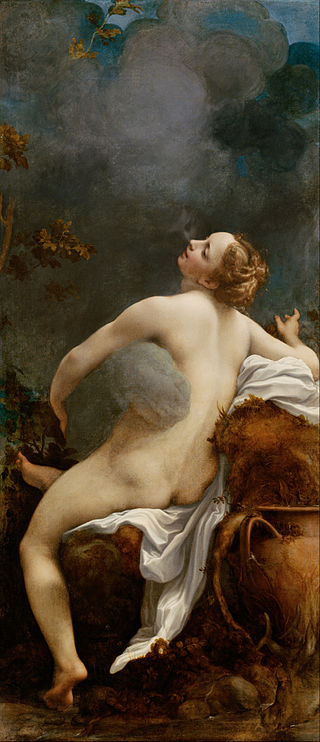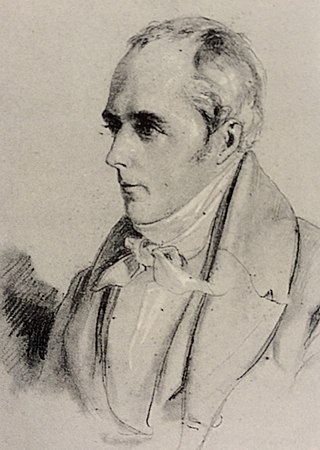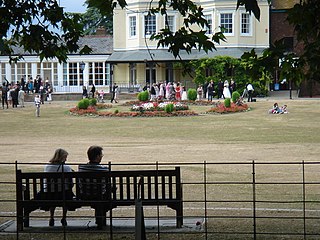Related Research Articles

Ford Madox Brown was a British painter of moral and historical subjects, notable for his distinctively graphic and often Hogarthian version of the Pre-Raphaelite style. Arguably, his most notable painting was Work (1852–1865). Brown spent the latter years of his life painting the twelve works known as The Manchester Murals, depicting Mancunian history, for Manchester Town Hall.

The National Gallery is an art museum in Trafalgar Square in the City of Westminster, in Central London, England. Founded in 1824, in Trafalgar Square since 1838, it houses a collection of over 2,300 paintings dating from the mid-13th century to 1900. The current Director of the National Gallery is Gabriele Finaldi.

Sir John Everett Millais, 1st Baronet was an English painter and illustrator who was one of the founders of the Pre-Raphaelite Brotherhood. He was a child prodigy who, aged eleven, became the youngest student to enter the Royal Academy Schools. The Pre-Raphaelite Brotherhood was founded at his family home in London, at 83 Gower Street. Millais became the most famous exponent of the style, his painting Christ in the House of His Parents (1849–50) generating considerable controversy, and he produced a picture that could serve as the embodiment of the historical and naturalist focus of the group, Ophelia, in 1851–52.

Ferdinand Victor Eugène Delacroix was a French Romantic artist regarded from the outset of his career as the leader of the French Romantic school.

William Thomas Beckford was an English novelist, art critic, planter and politician. He was reputed at one stage to be England's richest commoner. The son of William Beckford and Maria Hamilton, daughter of the Hon. George Hamilton, he served as a Member of Parliament for Wells in 1784–1790 and Hindon in 1790–1795 and 1806–1820. Beckford is best known for writing the 1786 Gothic novel Vathek, for building the Fonthill Abbey in Wiltshire and Beckford's Tower in Bath, and for his extensive art collection.

The Lady Lever Art Gallery is a museum founded and built by the industrialist and philanthropist William Lever, 1st Viscount Leverhulme and opened in 1922. The Lady Lever Art Gallery is set in the garden village of Port Sunlight, on the Wirral and one of the National Museums Liverpool.

Henry Walters was noted as an art collector and philanthropist, a founder of the Walters Art Gallery in Baltimore, Maryland, which he donated to the city in his 1931 will for the benefit of the public. From the late 19th century, Walters lived most of the time in New York City, where from 1903 on, he served on the executive committee of the Metropolitan Museum of Art in Manhattan on Fifth Avenue. He was selected as second vice president in 1913, a position he held until his death.

Samuel John Peploe was a Scottish Post-Impressionist painter, noted for his still life works and for being one of the group of four painters that became known as the Scottish Colourists. The other colourists were John Duncan Fergusson, Francis Cadell and Leslie Hunter.

John Roddam Spencer Stanhope was an English artist associated with Edward Burne-Jones and George Frederic Watts and often regarded as a second-wave pre-Raphaelite. His work is also studied within the context of Aestheticism and British Symbolism. As a painter, Stanhope worked in oil, watercolor, fresco, tempera, and mixed media. His subject matter was mythological, allegorical, biblical, and contemporary. Stanhope was born in Cawthorne, near Barnsley, Yorkshire, England, and died in Florence, Italy. He was the uncle and teacher of the painter Evelyn De Morgan and encouraged then unknown local artist Abel Hold to exhibit at the Royal Academy, which he did 16 times.

Henry William Eaton, 1st Baron Cheylesmore was a British businessman, Conservative politician, and art collector.

The Orleans Collection was a very important collection of over 500 paintings formed by Philippe d'Orléans, Duke of Orléans, mostly acquired between about 1700 and his death in 1723. Apart from the great royal-become-national collections of Europe it is arguably the greatest private collection of Western art, especially Italian, ever assembled, and probably the most famous, helped by the fact that most of the collection has been accessible to the public since it was formed, whether in Paris, or subsequently in London, Edinburgh and elsewhere.

Sir Thomas Fairbairn, 2nd Baronet was an English industrialist and art collector.

William Bromley-Davenport, also known as Davenport and Davenport-Bromley, was an English Conservative politician who sat in the House of Commons from 1864 to 1884.

Edward Solly was an English merchant living in Berlin, who amassed an unprecedented collection of Italian Trecento and Quattrocento paintings and outstanding examples of Early Netherlandish painting, at a time when those schools were still largely unappreciated. In 1821 Solly sold his collection of about 3000 works to the Prussian king; 677 of them formed a core of the Gemäldegalerie, Berlin. Solly acquired a second collection during his years in London after 1821. Solly is also credited for having undertaken a perilous journey to deliver the first news of Napoleon's defeat at the Battle of Leipzig to the English.

George W. Lininger (1834-1907), was an implement dealer, art collector, private gallery owner, and civic leader in Omaha, Nebraska, USA. Many of the art works Lininger collected became the foundation of the permanent collection at the Joslyn Art Museum in Omaha.

Richard Buckner, was an English portrait painter.
William Meriton Eaton, 2nd Baron Cheylesmore is best remembered as a leading collector of English mezzotint portraits, and collector of other art. His mezzotints and other prints, over 10,000 in number, were left to the British Museum, and five oil paintings to the National Gallery, London. He also stood unsuccessfully for Parliament for the Conservative Party at Macclesfield in 1868, 1874 and 1880, and held a nominal partnership in the family silk business.

Elhanan Bicknell was a successful London businessman and shipowner. He used his wealth as a patron of the arts, becoming one of the leading collectors of contemporary British art.

Court Garden in Marlow, Buckinghamshire, England, is a Grade II* listed building on the National Heritage List for England. It was built as a house in about 1758 by Dr William Battie, an eminent physician. It was sold in 1776 to Richard Davenport and remained in the Davenport family until 1894. It was then sold and became the home of the Griffin family for the next thirty years. The house and gardens were bought by public subscription in 1926, with the grounds being made a public park called Higginson Park. Since 1934 the house itself has served as council offices and as a venue for special events.

Joseph Harrison Jr. was an American mechanical engineer, financier and art collector. He made a fortune building locomotives for Russia, and was decorated by Czar Nicholas I for completing the Saint Petersburg-Moscow Railway.
References
- ↑ "Reverend Walter Davenport Bromley 1787 - 1862".
- ↑ "Walter Davenport-Bromley".
- 1 2 "Live Auction 1164 - OLD MASTER & BRITISH PAINTINGS EVENING SALE".
- ↑ J. Cornforth, 'Family Histories in Watercolour, Capesthorne Hall, Cheshire - II', Country Life, 8 September 1977, p. 608, fig. 4.